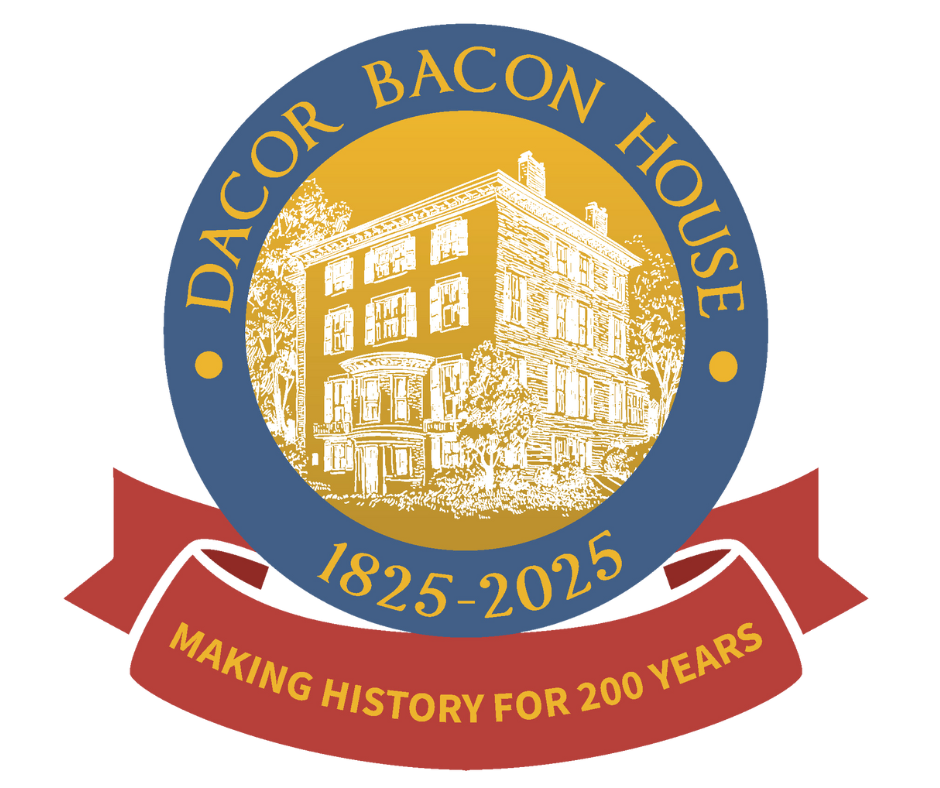Date/Time
3/19/2025
12:00 PM - 2:15 PM Eastern
12:00 PM - 2:15 PM Eastern

Event Registration
Event Type(s)
DACOR Bacon House Bicentennial
Event Description
The early great houses in the Washington DC area had large staffs that supported the families living in them, families who often entertained on a lavish scale and who demonstrated their social status through their houses. While these staffs initially were composed primarily of enslaved individuals, in time the families increasingly employed white servants – often Irish – while also hiring Black maids and nurses. “How a Great House Functioned in the 19th Century” highlights four of these houses – The White House, Decatur House, Tudor Place, and DACOR Bacon House – and how the staffs ensured the smooth functioning of these houses for their inhabitants.
Matthew Costello will discuss "Household Management at Decatur House and the White House." The household management of two historic homes on Lafayette Square — Decatur House and the White House – evolved over time. While there were considerable differences in terms of size and grandeur, both properties relied on free and enslaved workers to varying degrees during the nineteenth century. Rob DeHart will focus on "Creating 'Ancestral Spaces' for Descendants of Enslaved Individuals." Tudor Place in the Georgetown neighborhood developed an award-winning installation, "Ancestral Spaces: People of African Descent at Tudor Place." In creating this installation, Tudor Place engaged with descendants, built trust, and facilitated a tour that looked at the historic house wholly from their perspective. Terence Walz will examine "The DACOR Bacon House In Its Early Years." DACOR Bacon House was built in 1825 by enslaved and free labor for Tench Ringgold, marshal of the District of Columbia and managed in its early years by as many as a dozen to twenty enslaved workers. Under the Carroll family, which owned it 1835-1895, the staff changed from enslaved to free labor, the latter mostly Irish, and for big events, the food may have been catered. During the Fuller years, 1896-1910, the domestic labor force was again Black, though free and paid.
Dr. Matthew Costello is the Chief Education Officer and Director of the David M. Rubenstein National Center for White House History. He joined the Association in 2016 after completing his Ph.D. and M.A. in American history at Marquette University. His first book, The Property of the Nation: George Washington’s Tomb, Mount Vernon, and the Memory of the First President was published by University Press of Kansas and was a finalist for the 2020 George Washington Book Prize. He also co-edited and contributed a chapter to the volume Mourning the Presidents: Loss and Legacy in American Culture published by University of Virginia Press.
Rob DeHart is the curator at Tudor Place Historic House & Garden in Washington, DC. He creates museum content and collaborates with descendants of people who were enslaved to ensure their stories are told accurately. He received his MA in Public History from Middle Tennessee State University and is a peer reviewer for the American Alliance of Museums.
Dr. Terrence Walz has been Historian of the DACOR Bacon House since 2019. He is the author of two books on the history of Egypt, but since joining DACOR in 2017 he has focused on the history of the house and its inhabitants during the first one hundred years of its existence.
Matthew Costello will discuss "Household Management at Decatur House and the White House." The household management of two historic homes on Lafayette Square — Decatur House and the White House – evolved over time. While there were considerable differences in terms of size and grandeur, both properties relied on free and enslaved workers to varying degrees during the nineteenth century. Rob DeHart will focus on "Creating 'Ancestral Spaces' for Descendants of Enslaved Individuals." Tudor Place in the Georgetown neighborhood developed an award-winning installation, "Ancestral Spaces: People of African Descent at Tudor Place." In creating this installation, Tudor Place engaged with descendants, built trust, and facilitated a tour that looked at the historic house wholly from their perspective. Terence Walz will examine "The DACOR Bacon House In Its Early Years." DACOR Bacon House was built in 1825 by enslaved and free labor for Tench Ringgold, marshal of the District of Columbia and managed in its early years by as many as a dozen to twenty enslaved workers. Under the Carroll family, which owned it 1835-1895, the staff changed from enslaved to free labor, the latter mostly Irish, and for big events, the food may have been catered. During the Fuller years, 1896-1910, the domestic labor force was again Black, though free and paid.
Dr. Matthew Costello is the Chief Education Officer and Director of the David M. Rubenstein National Center for White House History. He joined the Association in 2016 after completing his Ph.D. and M.A. in American history at Marquette University. His first book, The Property of the Nation: George Washington’s Tomb, Mount Vernon, and the Memory of the First President was published by University Press of Kansas and was a finalist for the 2020 George Washington Book Prize. He also co-edited and contributed a chapter to the volume Mourning the Presidents: Loss and Legacy in American Culture published by University of Virginia Press.
Rob DeHart is the curator at Tudor Place Historic House & Garden in Washington, DC. He creates museum content and collaborates with descendants of people who were enslaved to ensure their stories are told accurately. He received his MA in Public History from Middle Tennessee State University and is a peer reviewer for the American Alliance of Museums.
Dr. Terrence Walz has been Historian of the DACOR Bacon House since 2019. He is the author of two books on the history of Egypt, but since joining DACOR in 2017 he has focused on the history of the house and its inhabitants during the first one hundred years of its existence.
Location
Setting: Hybrid
DACOR Bacon House OR Online
1801 F Street, NW
Washington, DC 20006
UNITED STATES
Click here for Google Maps
DACOR Bacon House OR Online
1801 F Street, NW
Washington, DC 20006
UNITED STATES
Click here for Google Maps
Contact Person
DACOR Programs
(phone: 202-682-0500 x120)
(phone: 202-682-0500 x120)
Details
- DACOR member in-person $45
- Non-member in-person $55
- Virtual attendance $10
Email Reminder
Event Documents/Images
The Black woman, "Mammy," who brought up Alida Carroll Brown in Washington, photographed in 1882 in Maine with Alida’s one-year-old son, Carroll Brown, and eldest daughter, Sally Carroll Brown.
Image: Maine Historical Society, John Marshall Brown Papers.

